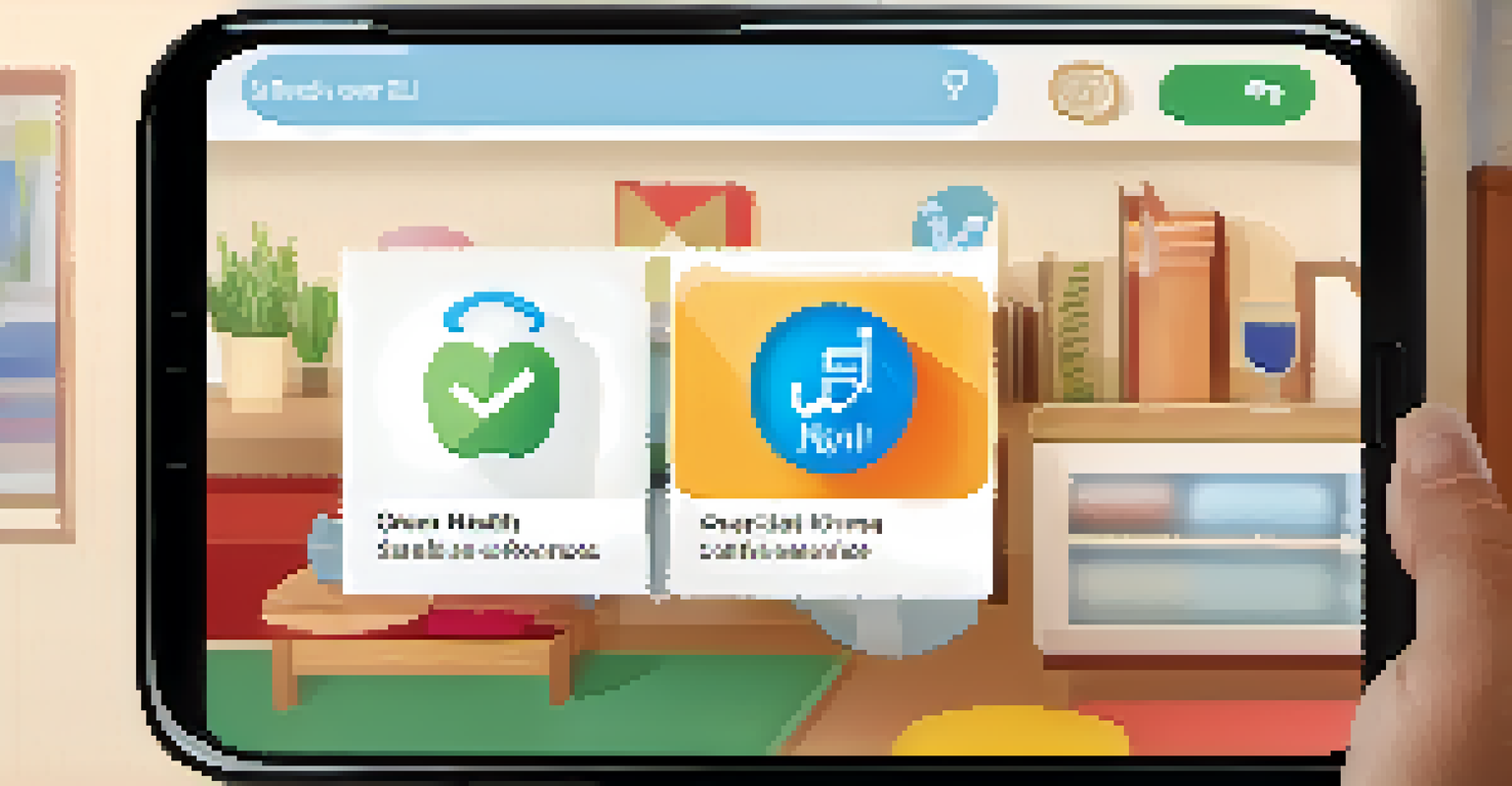Health Literacy: Bridging the Gap Between Patients and Care

Understanding Health Literacy: What It Is and Why It Matters
Health literacy refers to the ability to obtain, process, and understand basic health information needed to make informed decisions. It’s not just about reading pamphlets or forms; it’s about comprehending complex medical terminology and being able to communicate effectively with healthcare providers. When patients possess strong health literacy skills, they are more likely to engage in their healthcare actively.
Health literacy is the ability to access, understand, and use information to make informed health decisions.
Imagine trying to assemble a piece of furniture without instructions. That’s how many people feel when they navigate the healthcare system without adequate health literacy. They might miss critical pieces of information that could lead to better health outcomes. This gap not only affects individual patients but can also strain healthcare systems as a whole.
Improving health literacy means ensuring that everyone, regardless of their background or education level, can access and understand the information they need. This can mean providing materials in multiple languages or using simpler language to explain medical conditions and treatments. Ultimately, better health literacy leads to more empowered patients.
The Impact of Low Health Literacy on Patient Care
Low health literacy can have significant consequences for patients, often leading to misunderstandings about their health conditions and treatment plans. Patients may struggle to follow medication instructions or fail to recognize symptoms that require immediate attention. This can result in poorer health outcomes, increased hospital visits, and higher healthcare costs.

For example, consider a patient with diabetes who doesn’t fully understand how to manage their diet or monitor their blood sugar levels. Without the right knowledge, they may inadvertently make choices that worsen their condition. This situation highlights the critical need for clear communication and education from healthcare providers.
Health Literacy Empowers Patients
Strong health literacy enables patients to make informed decisions and actively engage in their healthcare.
Moreover, the effects of low health literacy extend beyond individual patients. Communities with a higher prevalence of low health literacy often experience greater health disparities. This underscores the importance of addressing health literacy at a systemic level, ensuring that everyone has the tools they need to thrive.
How Healthcare Providers Can Promote Health Literacy
Healthcare providers play a crucial role in fostering health literacy among their patients. This involves not only delivering information but ensuring that it’s understandable and actionable. Techniques like using plain language, teach-back methods, and visual aids can significantly enhance patient comprehension.
The single most important thing we can do to improve health is to improve health literacy.
For instance, when explaining a treatment plan, a doctor might ask the patient to explain it back to them. This simple technique helps ensure that the patient truly understands what’s been discussed and allows for any necessary clarification. It’s a collaborative approach that empowers patients to take charge of their health.
Additionally, providers can create an inviting atmosphere where patients feel comfortable asking questions. When patients are encouraged to voice their concerns or seek clarification, it leads to a more productive healthcare experience and fosters trust between patients and providers.
Community Initiatives to Enhance Health Literacy
Community initiatives are vital in promoting health literacy on a broader scale. Local organizations, libraries, and schools can collaborate to provide resources and training that empower individuals to make informed health decisions. These programs often focus on practical skills, like reading prescription labels or understanding health insurance.
For example, a local health fair might offer workshops on nutrition, exercise, and preventive care. These hands-on experiences engage community members and help demystify complex health information. When people come together to learn, they can support one another and share valuable insights.
Low Literacy Harms Health Outcomes
Patients with low health literacy often struggle with understanding their health conditions, leading to poorer health outcomes and increased costs.
Moreover, community initiatives can tailor their programs to meet the specific needs of the populations they serve. By considering cultural backgrounds and existing health disparities, these initiatives can effectively address barriers to health literacy, ultimately leading to healthier communities.
The Role of Technology in Health Literacy
In today’s digital age, technology plays a pivotal role in enhancing health literacy. Online resources, apps, and telehealth services can provide easy access to health information, making it more convenient for patients to learn about their conditions. However, it’s essential that these resources are designed with health literacy in mind.
For instance, patient portals can offer simplified access to lab results and educational materials. When these tools use straightforward language and clear visuals, they can significantly improve understanding. However, if information is overly technical, it may alienate those who need it most.
Additionally, social media platforms can serve as valuable channels for health education. Healthcare organizations can share short, informative posts that break down complex topics into digestible pieces. This approach not only reaches a wider audience but also encourages engagement and discussion around health-related issues.
Evaluating and Improving Health Literacy Programs
To ensure that health literacy programs are effective, regular evaluation is essential. This involves assessing the materials and methods used to determine whether they resonate with the target audience. Feedback from participants can provide insights into what works and what needs improvement.
For instance, surveys or focus groups can help gather opinions on whether the information provided was clear and useful. By actively seeking input from the community, organizations can refine their programs to better meet the needs of those they serve. This iterative process is crucial for ongoing improvement.
Collaboration Enhances Health Literacy
A collective effort among healthcare providers, community organizations, and patients is crucial for improving health literacy and fostering healthier communities.
Moreover, successful programs can serve as models for others. By sharing best practices and lessons learned, healthcare organizations can collaborate to create a more unified approach to health literacy. This collective effort can have a lasting impact on patient care and community health.
The Future of Health Literacy: A Collaborative Effort
Looking ahead, the future of health literacy hinges on collaboration among various stakeholders, including healthcare providers, patients, and community organizations. By working together, they can create a cohesive strategy that addresses the multifaceted nature of health literacy. This involves sharing resources, knowledge, and expertise to foster a more informed public.
For example, partnerships between hospitals and local schools can introduce health education early in life. By instilling health literacy skills in children, we can cultivate a generation of empowered individuals who are better equipped to navigate their healthcare journeys. This proactive approach can lead to long-term improvements in public health.

Ultimately, enhancing health literacy is not just the responsibility of one group; it requires a community-wide commitment to education and empowerment. By prioritizing health literacy, we can bridge the gap between patients and care, leading to healthier individuals and communities.